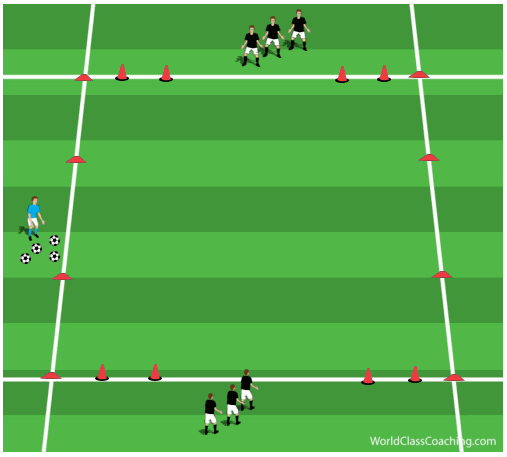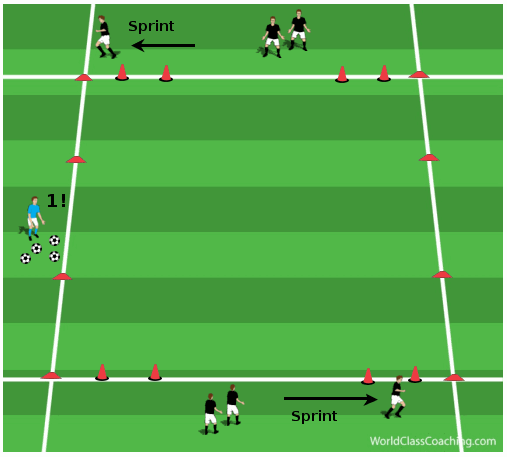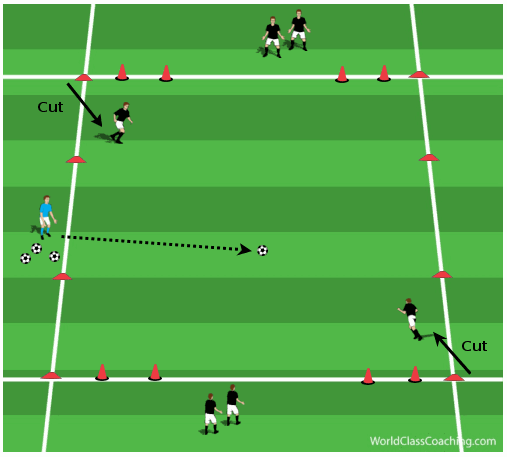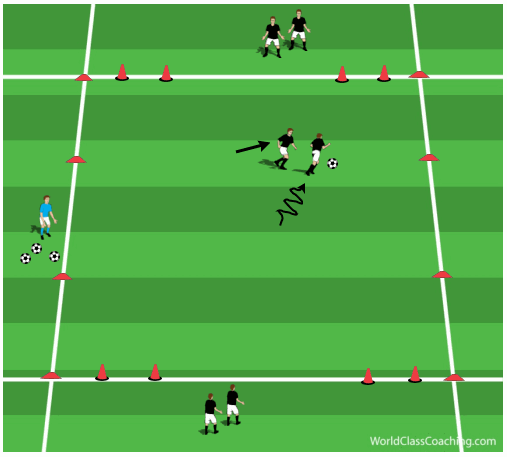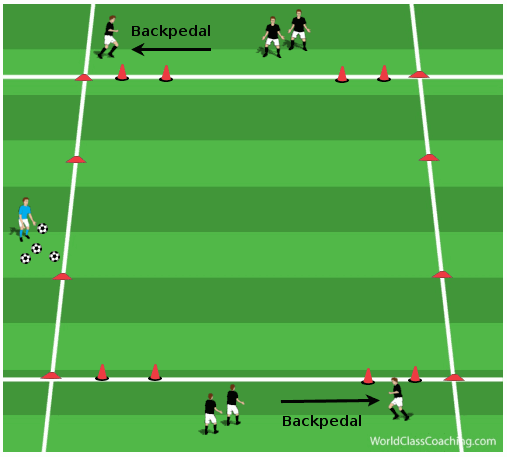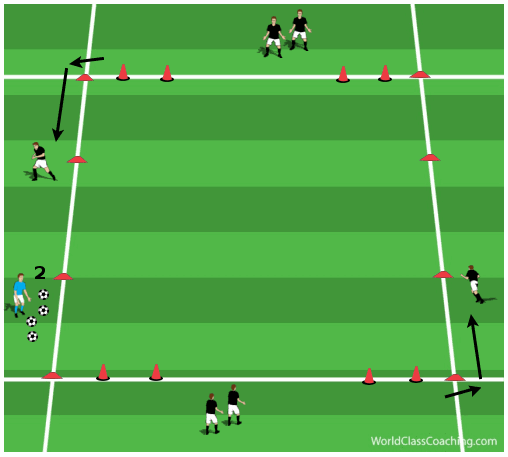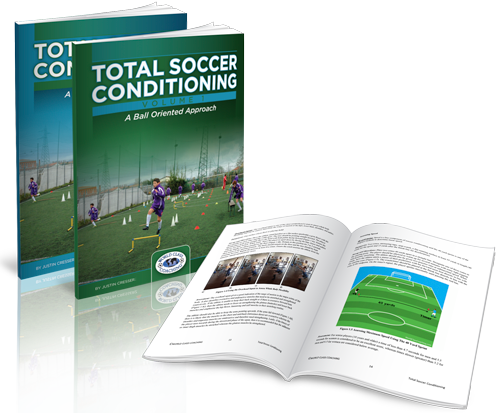By Justin Cresser Author of Total Soccer Conditioning: A Ball Orientated Approach
Small sided games are paramount for the development of youth players and the 1 v 1 variation is the simplest form. 1 v 1 situations occur frequently throughout the game, especially in the wide areas of the field, and being able to both defend and attack in these situations are key to the performance of the team. Playing in 1 v 1 encounters requires great speed, footwork and dribbling ability. In fact, many coaches believe that whoever wins the most 1 v 1 battles is likely to win the game.
Today’s exercise focuses on developing anaerobic capacity using a 1 v 1 small sided game with some simple modifications.
Set-up and Directions:
Divide your players into groups of 6 (preferably) or 8 players. For each group, set up the following station: Set up a 15 by 15 yard grid. Place two goals (1.5 yards in width) on both the top and bottom end lines so that each goal is 1 yard in from the sideline. For each grid/group, have half your players line up on the bottom end line and the other half on the top end line so that they are in line with the centre of the grid. The coach should stand on the side with a large supply of balls (Figure 1).
Play is initiated by the coach shouting either ‘One!’ or ‘Two!’ When he shouts one, the players at the front of each line will sprint to the corner of the grid (to their right), perform a cut and then sprint towards the centre of the grid. As soon as the players reach the corners, the coach will play a ball towards the middle of the grid (Figures 2 and 3).
The player who gets to the ball first must try and score in one of the two goals on the end line opposite to where they started. However, the player scores by dribbling the ball through the goal, not shooting (Figure 4). If the defending player wins the ball, they must attempt to score in the other two goals.
If the coach yells two, then the players must sprint to the corner of the grid (to their right), perform a cut and then sprint to the cone marking the midway point of the side line before entering the grid (Figure 5). As before, the coach will play a ball towards the middle of the grid for the players to race towards and then attempt to score.
The play ends as soon as: i) a player scores; ii) the ball goes out of play; or iii) 30 seconds of playing. Have the players join the end of a line and then have the next two go. It is important that the coach keeps the exercise flowing so that players don’t stand around. Players should wait no more than 90 seconds between repetitions.
Continue this activity until each player has performed five repetitions (1 set) and then have the players rest for three minutes. Have each group perform a total of three sets.
Coaching Points:
- The players must attempt players to sprint as quickly as possible using powerful steps and good body orientation
- he defending player must assume a side-on position with a low centre of gravity. In addition, their legs should be shoulder-width apart and they must be an arms-length away from the attacker. Instruct them not to ‘dive-in’, but to tackle when appropriate
- Encourage the attacking player to take the defender on at speed and to use a variety of fakes, moves, turns, etc., emphasizing change of speed and change of direction. Also, the attacker must keep control of the ball while dribbling
- This exercise is meant to be performed at a high-intensity, so encourage the players to work as hard as possible during each brief repetition
Variations:
You can vary this exercise (after each set) in several ways. For example, instead of have the players sprint towards the edge of the grid, you can have them backpedal (Figure 6) or shuffle side-to-side. You can also have start from a lying position or have them sprint a greater distance before entering the grid.
You can find similar articles to this one, as well as a comprehensive set of ball-focused fitness exercises, in my recently published book series: Total Soccer Conditioning: A Ball-Oriented Approach. You can find out more information about the book by accessing the link below:
Best of Luck,
Justin.
Justin Cresser has coached soccer at various levels both in North America and abroad (Hong Kong and Africa). He is currently the Assistant Technical Director at the Soccer Club of Toronto. He has his Advanced National Diploma from the NSCAA and is also a certified strength and conditioning coach. You can check out Justin's best-selling books here.

